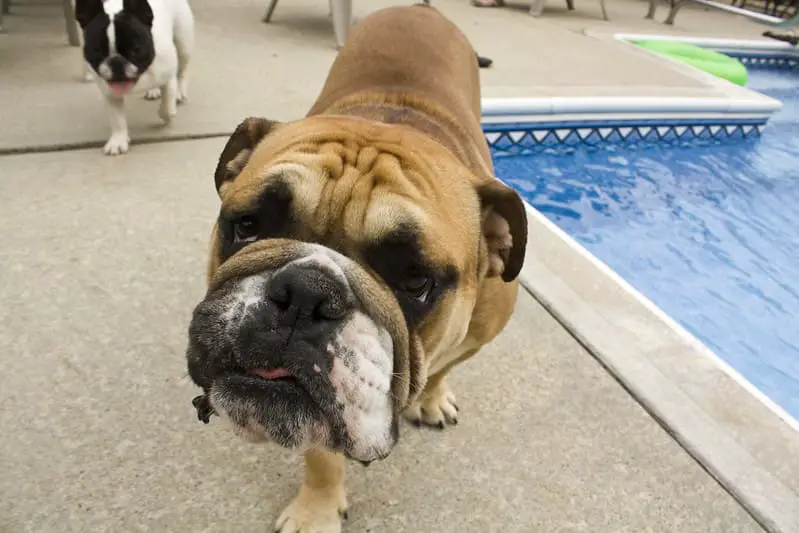Training a dog is an important part of responsible pet ownership. It enhances their behavior, strengthens the bond between you and your furry friend, and makes your home a happier place. But what if you have an adult dog? Is it possible to train them effectively, or is it too late? In this comprehensive guide, we’ll explore the possibilities and strategies for training adult dogs.

Can You Teach an Old Dog New Tricks?
The age-old adage, “You can’t teach an old dog new tricks,” has persisted through the generations, suggesting that once a dog reaches a certain age, they become resistant to learning new behaviors or skills. However, this widely held belief doesn’t accurately reflect the true potential of adult dogs when it comes to training. In reality, it is entirely possible to train an adult dog, and here’s why:
- Lifelong Learning Capability: Dogs, like humans, possess the ability to learn throughout their lives. While it’s true that puppies tend to be more impressionable and quick learners, this doesn’t mean that adult dogs are incapable of acquiring new skills or changing their behavior. The idea that learning becomes impossible after a certain age is a misconception.
- Better Attention Span: Adult dogs often have better attention spans compared to their younger counterparts. Puppies are easily distracted and may have difficulty focusing on training for extended periods. In contrast, adult dogs can concentrate on tasks and commands for more extended periods, making training sessions more efficient.
- Improved Impulse Control: Adult dogs tend to have better impulse control, which is essential for learning and following commands. They are less likely to act purely on instinct or impulses, making them more receptive to training that requires patience and self-control.
- Life Experience: Adult dogs come with a wealth of life experiences, which can be beneficial during training. They have encountered various situations and environments, which can make them more adaptable and capable of understanding different commands and expectations.
- Maturity and Calmness: Adult dogs have usually outgrown the hyperactivity and impulsiveness of their youth. This maturity and increased calmness can contribute to a more successful training experience. They are less likely to exhibit overly energetic or erratic behavior during training sessions.
- Tailored Training: When training adult dogs, it’s essential to adapt your methods to their individual needs and capabilities. While puppies may require a more straightforward and gradual approach, adult dogs can handle more complex tasks and training techniques, which can lead to faster progress in some cases.
- Behavioral Adjustment: If you’ve adopted an adult dog with existing behavioral issues, training can be particularly effective in addressing and rectifying these problems. With patience, consistency, and positive reinforcement, you can help an adult dog overcome unwanted behaviors and develop more desirable ones.

Understanding Adult Dog Training
Training an adult dog involves different challenges compared to training a puppy. Adult dogs may have already established certain behaviors, whether good or bad. Here are some key factors to consider when training an adult dog:
- Patience: Adult dogs may have developed habits over time, so be patient. It might take longer to change their behavior.
- Consistency: Consistency in training methods and commands is crucial. Make sure all family members are on the same page.
- Positive Reinforcement: Positive reinforcement, such as treats and praise, is highly effective in adult dog training. Reward good behavior to encourage it.
- Understand Their History: If you adopted an adult dog, try to learn about their history. This can provide valuable insights into their past training and experiences.
- Professional Help: If you’re struggling, consider seeking help from a professional dog trainer who specializes in adult dogs.
Common Challenges in Training Adult Dogs
Adult dogs may come with unique challenges:
- Behavioral Issues: They may have developed behavioral issues that need to be addressed, such as aggression, anxiety, or excessive barking.
- Habitual Behavior: They might have long-standing habits that are hard to break.
- Health Concerns: Older dogs may have health issues that affect their ability to learn, so always consider their physical and mental well-being.

Steps to Train an Adult Dog
Here is a step-by-step guide to training an adult dog:
- Assess Your Dog: Identify your dog’s strengths and weaknesses and understand what specific training they need.
- Basic Obedience Training: Start with basic commands like sit, stay, come, and down. Use positive reinforcement techniques.
- Desensitization and Counterconditioning: If your dog has fears or aggression issues, work on desensitization and counterconditioning.
- Advanced Training: After mastering basic commands, move on to advanced training like leash walking, off-leash commands, and tricks.
- Socialization: Socialize your dog with other dogs and people if they weren’t adequately socialized as a puppy.
- Consistency: Maintain consistent training routines and be patient. Adult dogs may need more time to unlearn bad habits and establish new ones.
- Seek Professional Help: If your dog has severe behavioral issues, consult a professional dog trainer or a veterinary behaviorist.
Training Tools
Effective training tools can significantly aid in the process of training your adult dog. These tools are designed to assist you in reinforcing desired behaviors and promoting a positive learning experience. Here’s an expanded look at some essential training tools:
1. Treats: High-quality treats are a fundamental tool in training adult dogs. They serve as a form of positive reinforcement, motivating your dog to obey commands and exhibit good behavior. When your dog follows a command correctly or displays desired conduct, promptly reward them with a treat. It’s essential to use treats that your dog finds particularly enticing to ensure their effectiveness. Over time, as your dog associates treats with positive behavior, you can gradually reduce the frequency of treat rewards.
2. Clicker: A clicker is a small handheld device that emits a distinct clicking sound when pressed. This tool is used to mark specific behaviors or actions that you want to reinforce in your dog. The clicker serves as a precise way to communicate with your dog, as it produces a consistent sound each time, which helps your dog understand the exact moment they performed the desired action. Pair the clicker sound with treats or other rewards to reinforce the behavior further. Over time, your dog will associate the click with a positive outcome and be more likely to repeat the behavior.
3. Training Collar: Depending on your dog’s temperament and specific training needs, a training collar can be a valuable tool. Training collars come in various types, including flat collars, martingale collars, slip collars, and more. These collars are typically used to reinforce leash training, proper walking etiquette, or commands. It’s essential to choose a collar that suits your dog’s size, breed, and comfort. Always ensure that the collar is properly fitted and used correctly to avoid any discomfort or injury to your dog. Consult with a professional dog trainer to determine the most appropriate collar for your dog’s training requirements.
4. Training Leash: A training leash is a specialized tool designed to assist in leash training and control during walks. It can be particularly useful for dogs that tend to pull on the leash or display unruly behavior during walks. Training leashes are available in different lengths and styles, including standard leashes, retractable leashes, and adjustable leashes. Using a training leash allows you to maintain better control over your dog’s movements and helps reinforce leash manners. Be sure to introduce the training leash gradually and teach your dog to walk comfortably by your side.
Each of these training tools plays a unique role in the training process, and their effectiveness depends on your dog’s individual temperament and needs. When used correctly and in conjunction with positive reinforcement techniques, these tools can contribute to a successful and rewarding training experience for your adult dog. Always prioritize your dog’s comfort and well-being while using these tools, and consult with a professional dog trainer if you have any concerns or questions about their usage.

FAQs: Is It Possible To Train An Adult Dog?
1. Can all adult dogs be trained, or are there exceptions?
While most adult dogs can be trained, there may be exceptions. Dogs with severe behavioral issues or certain medical conditions may face more challenges. However, with patience and the right approach, many can still make significant progress in their training.
2. Are there any specific training techniques that work better for adult dogs?
Positive reinforcement techniques, such as using treats and praise, tend to work well for adult dogs. They respond positively to rewards for good behavior. However, the specific techniques may vary depending on the dog’s individual needs and temperament.
3. How long does it take to train an adult dog?
The duration of training varies from dog to dog. It depends on factors such as the dog’s age, prior training or behavior issues, and the consistency of training. Basic obedience training can take a few weeks, while more advanced training may take several months or longer.
4. Can I train an adult rescue dog with an unknown history?
Yes, you can train an adult rescue dog with an unknown history. It might take a bit more time and patience, as you’ll need to assess their behavior and any issues they may have developed. Professional help can be valuable in these cases.
5. Is it too late to train an older dog who has had no prior training?
It’s never too late to start training an older dog with no prior training. While it may take longer to break existing habits and establish new ones, older dogs often have better attention spans, making training feasible.

6. Should I seek professional help for adult dog training, or can I do it on my own?
It depends on the dog’s needs and your experience. Seeking professional help is a good idea if your dog has severe behavioral issues or if you’re unsure about how to proceed. A professional dog trainer or veterinary behaviorist can provide guidance and tailored solutions.
7. Can I train my senior dog, or is it too late for them?
You can train senior dogs, and it’s never too late to start. In fact, training can provide mental stimulation and improve their quality of life. Adjust the training to accommodate any physical limitations or age-related concerns.
8. What if my adult dog is aggressive? Can they still be trained?
Yes, adult dogs with aggression issues can be trained, but it’s essential to address these issues carefully. Seek professional help from a certified dog behaviorist or trainer experienced in handling aggressive behavior. Safety should always be a priority in these cases.
9. How can I find the right training tools for my adult dog?
Finding the right training tools depends on your dog’s temperament and needs. Consult with a professional trainer for recommendations. Common training tools include treats, clickers, training collars, and training leashes, but their suitability varies from dog to dog.
10. Can I train my adult dog without treats or rewards?
While positive reinforcement through treats or rewards is highly effective, some dogs may respond to other motivators like toys or praise. The key is finding what motivates your dog and using it to reinforce good behavior.
Conclusion
In conclusion, it is absolutely possible to train an adult dog. While it may require more patience and consistency, the rewards of a well-trained adult dog are well worth the effort. Remember that every dog is unique, and the training process should be tailored to their specific needs and personality. Seek professional guidance when necessary, and always prioritize positive reinforcement techniques to create a happy, well-behaved adult dog that you can enjoy for years to come.
